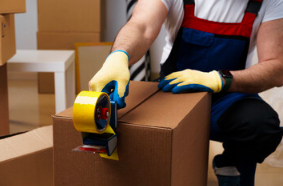Choosing a Packing and Unpacking Contractor
The task of moving can be a difficult one. It requires you to make many decisions, including those about the moving company and services that you will use. Packing and unpacking Rhode Island Movers can offer a number of benefits, including time savings, convenience and safety. But are these services necessary for your move?
The cost of packing and unpacking a home depends on the amount of time you need to spend on the project. Professional packers usually charge a per-hour rate, while you may also need to pay for materials. The hourly rate can vary depending on your location and the size of your home, but it generally ranges between $100 and $1,400.
If you’re planning to hire a packer to help you pack and unpack, you can estimate the price by checking with several companies that specialize in this service. You can ask them to come to your home and assess the job, which will give you a better idea of how much it will cost.
You can also save money by preparing your own boxes before hiring a packing and unpacking company. It’s not uncommon to find free or cheap boxes online, and you can use household items as substitutes for expensive packing materials.
Another option is to choose a packing and unpacking contractor that also offers moving services, which can cut down on your expenses. These companies may offer a package that includes all of the services you need. This can be a good choice for those who want to avoid paying for multiple services separately, but it’s important to note that these companies will not be able to handle all of your belongings.
Convenience
When it comes to moving, there are few decisions that have as much impact on your family as choosing the right packing and unpacking services. The contractor you choose will help make the entire process easier on you and your family by taking on some of the burdens that are often associated with a move.
The term “convenience” is often used in the context of retail channels, especially convenience stores. This is because a majority of shoppers consider convenience to mean a store experience that saves them time and effort.
A convenience store, also called a c-store, is a place that sells items such as gasoline, groceries and other necessities, in an environment designed to be quick and easy to navigate. These stores often have prime locations and serve customers around-the-clock.
Convenience stores are a major part of the shopping experience for consumers across all age groups, including teens and adults. Nearly two-thirds of Americans shop at a c-store at least weekly, and the youngest generation of consumers, millennials, are particularly fond of this type of store.
As a result, many c-stores focus on simplifying the shopping and purchasing experience to draw in new customers. These efforts may include introducing new products or increasing the availability of products that are popular among current shoppers.
For example, a lot of people buy milk at filling stations. This is because it can be a more affordable option than going to a supermarket, and it’s convenient to purchase at the same location as you refill your gas tank.
A few other examples of conveniences in everyday life are electricity and indoor plumbing, which save time by providing a simpler way to get things done. Convenience foods, on the other hand, are products that are prepared and packaged with minimal preparation, which spares the consumer’s time and energy. These are a growing trend in the food industry, with more and more consumers demanding these solutions.
Time
Packing and unpacking is one of the most difficult, time-consuming, and frustrating aspects of a move. It can be especially frustrating if you have limited time between jobs, or if you’re a busy parent with kids. But don’t worry — there are plenty of expert unpacking contractors who can help you quickly get settled in your new home.
The length of the packing and unpacking process will depend on how much you have to pack, as well as what kind of things you’re moving. For example, you might not need to pack a lot of heavy furniture or large appliances like washers and dryers. However, you will have to pack more delicate items such as glassware and dishes, so this will add some time.
Moreover, it’s important to consider your budget. It’s best to budget for the entire process, including labor and materials. This way, you won’t have to worry about a sudden bill for packing supplies or additional charges after your moving date.
Safety
The packing and unpacking of a home can involve a lot of movement and risk. The movers need to be careful not to damage the contents of the container, but also make sure they’re not hurting themselves in the process.
It’s common for a house move to last several days or even weeks. This puts the movers in a time crunch to get all the boxes unpacked in a safe manner. It’s also common for items to come loose during transport or spill out of the container when opened, which can be a serious threat to workers.
The best way to keep your movers safe is to implement a safety program that incorporates various forms of learning. This can include interactive quizzes, digital signage, coordinated huddle guides, and visual posters. A well-rounded training program can be a great investment that can help you reduce injuries and keep your employees happy, healthy, and productive. The right program will also allow you to customize your messaging to suit your facility and your employees’ needs. This will ensure that all your movers are well-trained and equipped with the knowledge needed to get the job done safely.
